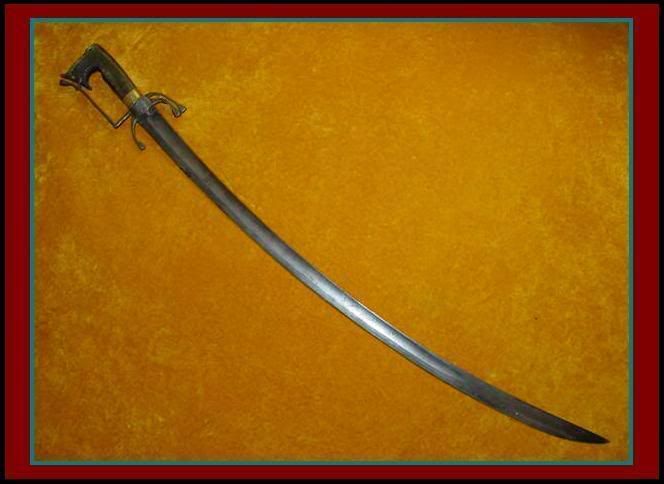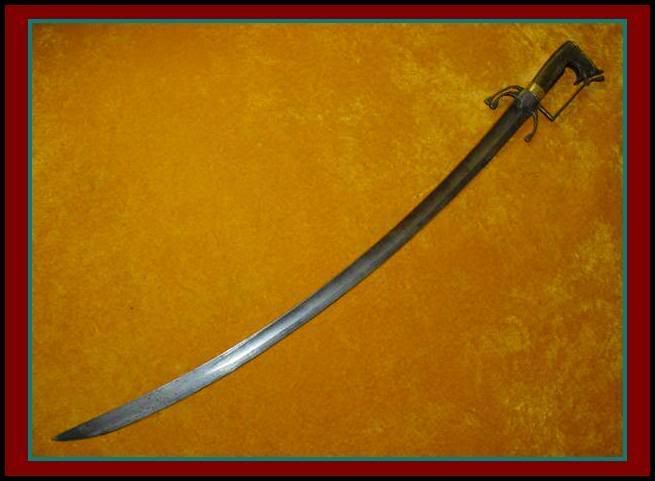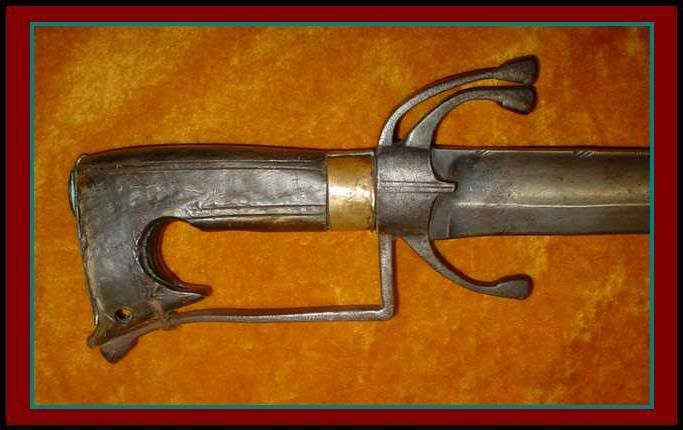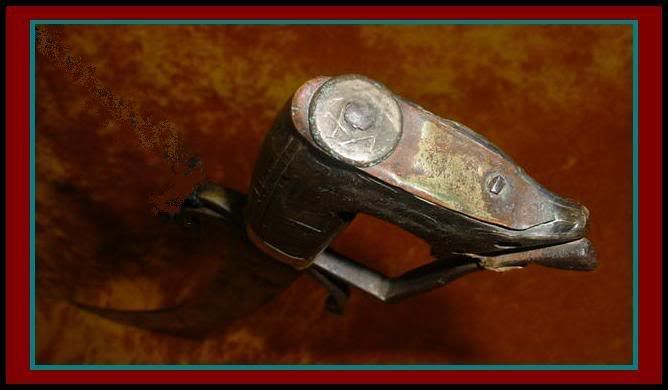
 |
|
|
#1 |
|
Member
Join Date: Jun 2008
Posts: 119
|
    not a weapon to be carried shipboard i presume. |
|
|
|
|
#2 |
|
Member
Join Date: Feb 2006
Posts: 637
|
I must be missing something here what do you mean camelback and what do you mean not being carried at sea
|
|
|
|
|
#3 |
|
Keris forum moderator
Join Date: Aug 2006
Location: Nova Scotia
Posts: 7,125
|
Went over my head as well Ward.

|
|
|
|
|
#4 |
|
Member
Join Date: Jun 2008
Posts: 119
|
i meant that it was more of a cavalry weapon and not a naval one.
and since alot of north african cavalry was of the camel variety, there you go. sorry for the unintentional obtuseness. |
|
|
|
|
#5 |
|
Member
Join Date: Feb 2006
Posts: 637
|
so is there a question or did you buy this or what?
|
|
|
|
|
#6 |
|
Arms Historian
Join Date: Dec 2004
Location: Route 66
Posts: 9,948
|
No problem Chevalier, I see what you were getting at, but would like to know where the photos are from. Is this a weapon of yours or out of a book or catalog?
These are the famed 'nimcha' sabres from the Maghreb in North Africa, typically associated with the notorious Barbary Pirates. This particular hilt system is derived most likely from Italian hilts of the 16th century and recalls the Venetian trade predominant in the North African littoral then. The cavalry observation has some validity in that this example is mounted with a European cavalry blade, this one probably early 19th century, and these 'nimchas' were almost invariably mounted with European blades even with early examples of 17th century. The Arabian term 'nimcha' is in fact a misnomer in these swords as technically it means 'short sword' as was originally applied to short weapons used in fact by sea going raiders in Arabia, becoming applied to these swords in the ports of Morocco and Algeria. The term is a collectors term at this point used for these sabres, which are known as sa'if collectively. That they were used at sea is granted unlikely for seaboard melee, as these long blades were not practical in the cramped decks. It seems however, that typically the Barbary Pirates (again a widely applied term) were more involved in raids and attacks on land than in seagoing action (which of course still took place on occasion, with other more suitable weapons used). It is interesting to note that these 'nimcha' were known to other world powers who came into contact with these 'pirates', and there are paintings even in several cases of English noblemen wearing them, more for show than actually using them. Many of these are intriguing as they carry so many examples of the trade blades we have discussed here, even some carry the 'Andrea Ferrara' that is so distintly noted on Scottish basket hilt blades. So in all.....used by pirates, but not typically at sea.....and though carrying cavalry blades....not known to have been used by warriors on camels. The sword wielding warriors were typically the Tuaregs of the Sahara, who still carry on formidable raids, and still wear thier takouba broadswords. All the best, Jim |
|
|
|
|
#7 |
|
Member
Join Date: Feb 2006
Posts: 637
|
I thought I recognized those pics this is currently a active auction on gun broker. Does anyone read the rules at all
|
|
|
|
|
#8 | |
|
Member
Join Date: Nov 2004
Location: USA
Posts: 1,725
|
Quote:
Sorry, Chevalier. 
|
|
|
|
 |
|
|